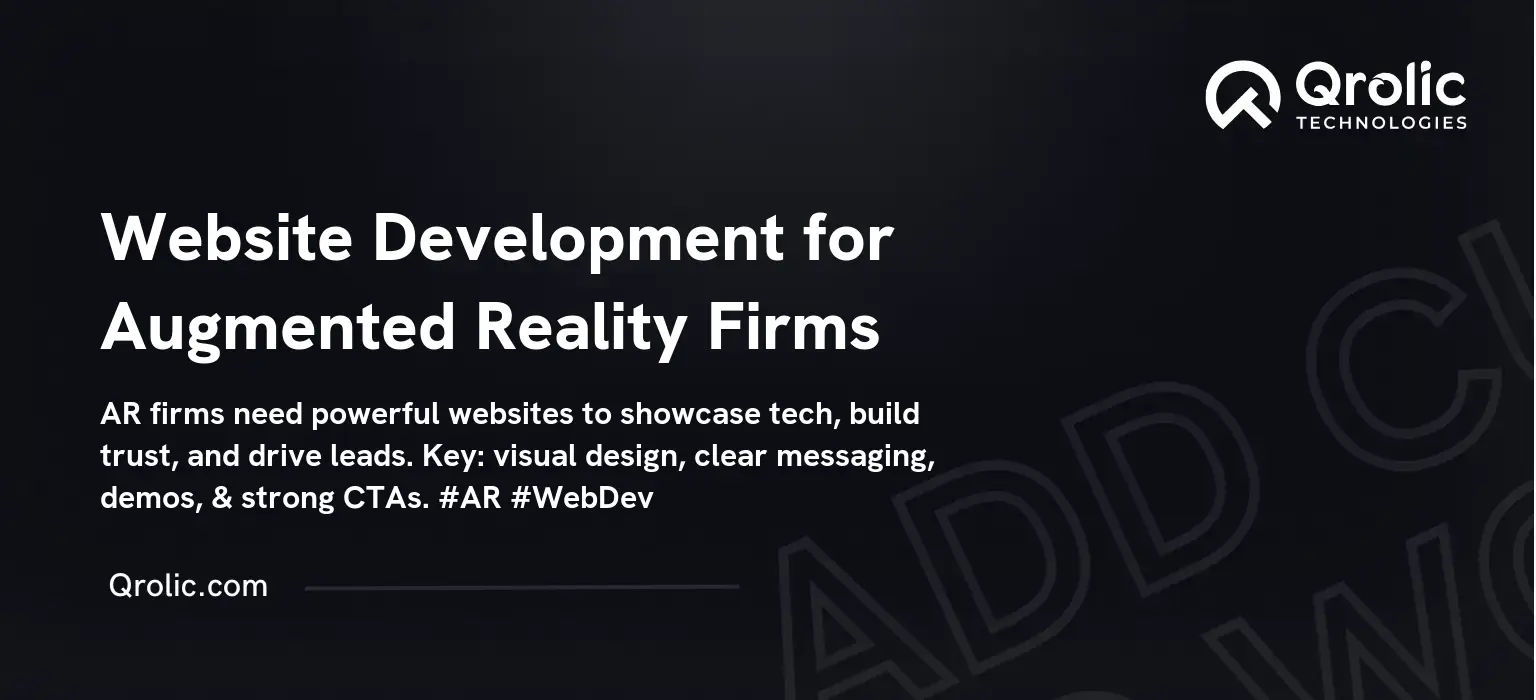Quick Summary:
- Plan your AR website with clear objectives.
- Design it to showcase AR powerfully with demos.
- Optimize content for search engines and users.
- Continuously update and improve your site.
Table of Contents
- Understanding the Foundation: Why Your AR Firm Needs a Stellar Website
- The Evolving Landscape: AR and the Digital Realm
- Beyond Aesthetics: The Core Objectives of Your AR Firm Website
- Planning and Preparation: Setting the Stage for Success
- Defining Your Target Audience: Who Are You Trying to Reach?
- Content Strategy: Crafting Compelling Narratives
- Keyword Research: Optimizing for Search Engines
- Defining Your Brand Identity: Creating a Consistent Visual Experience
- Design and Development: Bringing Your Vision to Life
- Website Platform Selection: Choosing the Right Foundation
- User Interface (UI) and User Experience (UX) Design: Creating an Engaging Experience
- Showcasing AR in a Digital Format: Highlighting Your Expertise
- Content Management System (CMS) and Integrations: Streamlining Your Workflow
- Search Engine Optimization (SEO): Driving Organic Traffic
- On-Page Optimization: Optimizing for Search Engines
- Off-Page Optimization: Building Authority and Backlinks
- Technical SEO: Ensuring a Smooth User Experience for Search Engines
- Content Marketing: Engaging and Educating Your Audience
- Blogging Strategy: Building a Knowledge Hub
- Video Marketing: Showcasing Your AR Solutions
- Social Media Marketing: Building a Community
- Measuring and Analyzing: Tracking Your Progress
- Google Analytics: Understanding Your Website Traffic
- SEO Tools: Monitoring Your Search Engine Performance
- A/B Testing: Optimizing Your Website for Conversions
- Qrolic Technologies: Your Partner in AR Innovation
- Staying Ahead of the Curve: The Future of AR Websites
- Emerging Trends in AR Web Design
- Continuous Improvement: Iterating and Evolving Your Website
Understanding the Foundation: Why Your AR Firm Needs a Stellar Website

The Evolving Landscape: AR and the Digital Realm
Augmented Reality (AR) is no longer a futuristic fantasy; it’s a present-day reality transforming industries from retail and gaming to healthcare and education. As an AR firm, your expertise lies in bridging the physical and digital worlds. Your website, therefore, becomes the critical portal through which you showcase this expertise, attract clients, and establish your authority in this dynamic field.
Why is a stellar website paramount? Because in the digital age, your website is often the first impression. It’s your digital storefront, your 24/7 sales representative, and the cornerstone of your online presence. A poorly designed or outdated website can instantly deter potential clients, no matter how groundbreaking your AR solutions might be.
Beyond Aesthetics: The Core Objectives of Your AR Firm Website
Your website needs to accomplish more than just looking good. It needs to fulfill specific objectives to drive business growth:
- Generate Leads: Attract qualified leads interested in AR solutions.
- Showcase Expertise: Demonstrate your capabilities and experience in various AR applications.
- Build Trust and Credibility: Establish your firm as a reliable and innovative leader in the AR space.
- Educate Your Audience: Explain complex AR concepts in a clear and accessible manner.
- Drive Conversions: Encourage visitors to contact you, request a demo, or engage with your services.
- Attract Talent: Draw in skilled AR developers, designers, and other professionals.
- Enhance Brand Awareness: Increase recognition and visibility for your AR firm.
Planning and Preparation: Setting the Stage for Success
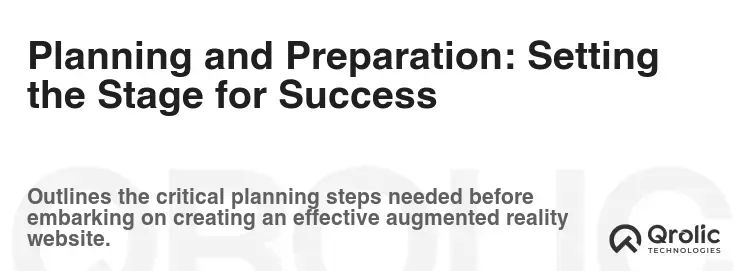
Defining Your Target Audience: Who Are You Trying to Reach?
Before diving into design and development, it’s crucial to identify your ideal client. Understanding their needs, pain points, and online behavior will inform every aspect of your website. Consider the following:
- Industry Verticals: Which industries do you specialize in (e.g., retail, healthcare, manufacturing)?
- Company Size: Are you targeting startups, SMEs, or large enterprises?
- Technical Expertise: How familiar is your audience with AR technology?
- Decision-Making Process: Who are the key decision-makers you need to influence?
- Geographic Location: Are you targeting clients locally, nationally, or globally?
Creating detailed buyer personas will help you tailor your website content, design, and marketing efforts to resonate with your target audience.
Content Strategy: Crafting Compelling Narratives
Your website content should be informative, engaging, and tailored to your target audience. It should effectively communicate the value proposition of your AR solutions and demonstrate your expertise.
Here’s a breakdown of essential website content:
- Homepage: A concise overview of your services, showcasing your key differentiators and highlighting impressive projects.
- About Us: Tell your story, emphasizing your company’s mission, values, and team expertise.
- Services: Detail the specific AR services you offer, such as AR app development, AR marketing campaigns, AR training solutions, and AR SDK integration. Explain how these services address specific client needs.
- Portfolio/Case Studies: Showcase your successful AR projects with detailed descriptions, compelling visuals, and quantifiable results.
- Blog: Regularly publish insightful articles, tutorials, and news updates related to AR technology, industry trends, and your company’s work.
- Resources: Offer valuable resources such as white papers, ebooks, and webinars to educate your audience and establish your thought leadership.
- Contact Us: Make it easy for visitors to get in touch with you through a clear and prominent contact form, phone number, and email address.
- Testimonials: Feature positive testimonials from satisfied clients to build trust and credibility.
- Careers: Attract top talent by showcasing your company culture, values, and career opportunities.
Keyword Research: Optimizing for Search Engines
Keyword research is the foundation of any successful SEO strategy. It involves identifying the terms and phrases that your target audience uses when searching for AR solutions online. Use tools like Google Keyword Planner, Ahrefs, SEMrush, and Moz Keyword Explorer to discover relevant keywords with high search volume and low competition.
Focus on long-tail keywords (e.g., “AR app development for the retail industry,” “affordable AR marketing solutions for small businesses”) as they tend to be less competitive and more targeted.
Integrate these keywords naturally into your website content, page titles, meta descriptions, and image alt tags. Augmented reality website and AR company design are the core keywords to be highlighted throughout the content.
Defining Your Brand Identity: Creating a Consistent Visual Experience
Your brand identity should be reflected in every aspect of your website design. This includes your logo, color palette, typography, and overall visual style.
- Logo: A professional and memorable logo is essential for brand recognition.
- Color Palette: Choose colors that align with your brand personality and evoke the desired emotions.
- Typography: Select fonts that are easy to read and visually appealing.
- Imagery: Use high-quality images and videos that showcase your AR solutions and company culture.
Consistency is key. Ensure that your brand identity is consistent across all your online and offline marketing materials.
Design and Development: Bringing Your Vision to Life
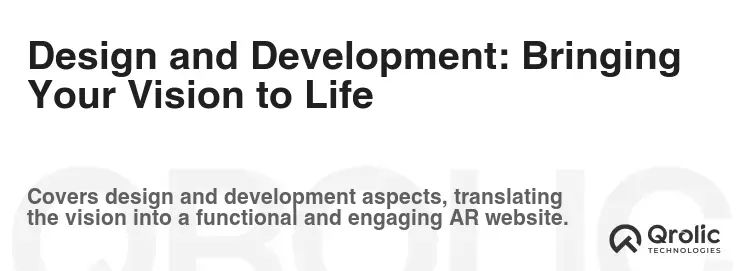
Website Platform Selection: Choosing the Right Foundation
Selecting the right website platform is crucial for the success of your AR firm website. Several options are available, each with its own strengths and weaknesses:
- wordpress: A popular and versatile platform with a wide range of themes and plugins. It’s a great option for businesses of all sizes.
- Webflow: A visual website builder that allows you to create custom designs without coding. It’s ideal for designers and marketers who want more control over the look and feel of their website.
- Squarespace: A user-friendly platform with a drag-and-drop interface. It’s a good option for businesses that want a simple and affordable website.
- Custom Development: Building a website from scratch gives you complete control over the design and functionality. However, it’s also the most expensive and time-consuming option.
Consider your budget, technical expertise, and desired level of customization when choosing a website platform.
User Interface (UI) and User Experience (UX) Design: Creating an Engaging Experience
UI design focuses on the visual elements of your website, while UX design focuses on the overall user experience. A well-designed website should be both visually appealing and easy to use.
- Intuitive Navigation: Make it easy for visitors to find what they’re looking for.
- Clear Calls to Action: Guide visitors towards desired actions, such as contacting you or requesting a demo.
- Mobile-Responsive Design: Ensure that your website looks and functions perfectly on all devices, including smartphones and tablets.
- Fast Loading Speed: Optimize your website for speed to improve user experience and SEO.
- Accessibility: Make your website accessible to users with disabilities by following accessibility guidelines (WCAG).
Showcasing AR in a Digital Format: Highlighting Your Expertise
Since you’re an AR firm, you need to showcase your expertise in a digital format. This can be achieved through several means:
- Interactive Demos: Embed interactive AR demos on your website that allow visitors to experience your solutions firsthand.
- Videos: Create videos showcasing your AR projects and explaining the benefits of your services.
- 3D Models: Use 3D models to visualize your AR solutions and provide a more immersive experience.
- Augmented Reality Experiences: Integrate AR experiences directly into your website, allowing visitors to interact with your brand in a unique and engaging way.
These features are especially critical for demonstrating your expertise in AR company design.
Content Management System (CMS) and Integrations: Streamlining Your Workflow
A CMS allows you to easily manage and update your website content without coding. Popular CMS options include WordPress, Drupal, and Joomla.
Integrate your website with other tools and platforms to streamline your workflow:
- CRM (Customer Relationship Management): Integrate with CRM systems like Salesforce or HubSpot to manage leads and customer interactions.
- Marketing Automation: Automate your marketing tasks with tools like Mailchimp or Marketo.
- Analytics: Track your website traffic and performance with tools like Google Analytics.
Search Engine Optimization (SEO): Driving Organic Traffic
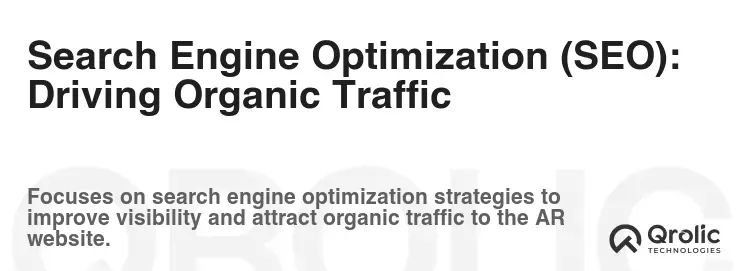
On-Page Optimization: Optimizing for Search Engines
On-page optimization involves optimizing your website content and code to improve its ranking in search engine results pages (SERPs).
- Title Tags: Create compelling and keyword-rich title tags for each page.
- Meta Descriptions: Write concise and informative meta descriptions that entice users to click on your website.
- Header Tags (H1-H6): Use header tags to structure your content and highlight important keywords.
- Image Alt Tags: Add descriptive alt tags to your images to improve accessibility and SEO.
- Internal Linking: Link to relevant pages within your website to improve navigation and SEO.
- URL Structure: Use clear and descriptive URLs that include relevant keywords.
Off-Page Optimization: Building Authority and Backlinks
Off-page optimization involves building your website’s authority and reputation through external factors, such as backlinks.
- Backlink Building: Earn backlinks from high-quality websites in your industry.
- Social Media Marketing: Promote your website and content on social media platforms.
- Online Directory Listings: List your website in relevant online directories.
- Guest Blogging: Contribute guest posts to other websites in your industry.
- Public Relations: Get your company featured in news articles and press releases.
Technical SEO: Ensuring a Smooth User Experience for Search Engines
Technical SEO involves optimizing your website’s technical aspects to ensure that it’s easily crawled and indexed by search engines.
- Mobile-Friendliness: Ensure that your website is mobile-friendly.
- Site Speed: Optimize your website for speed.
- XML Sitemap: Submit an XML sitemap to search engines to help them crawl your website.
- Robots.txt File: Use a robots.txt file to control which pages search engines can crawl.
- SSL Certificate: Install an SSL certificate to secure your website and improve its ranking.
Content Marketing: Engaging and Educating Your Audience

Blogging Strategy: Building a Knowledge Hub
Regularly publishing blog posts is a powerful way to attract and engage your target audience.
- Keyword Research: Identify relevant keywords to target with your blog posts.
- Content Calendar: Create a content calendar to plan your blog posts in advance.
- High-Quality Content: Write informative, engaging, and well-researched blog posts.
- Visuals: Include images, videos, and infographics in your blog posts.
- Promotion: Promote your blog posts on social media and other channels.
Video Marketing: Showcasing Your AR Solutions
Video is a highly effective medium for showcasing your AR solutions and engaging your audience.
- Product Demos: Create videos demonstrating your AR products and services.
- Case Studies: Showcase your successful AR projects with video case studies.
- Behind-the-Scenes: Give viewers a glimpse into your company culture and AR development process.
- Educational Videos: Create videos explaining AR concepts and industry trends.
Social Media Marketing: Building a Community
Social media is a valuable tool for building a community around your brand and engaging with your target audience.
- Choose the Right Platforms: Focus on the social media platforms where your target audience is most active.
- Consistent Branding: Maintain a consistent brand identity across all your social media profiles.
- Engaging Content: Share engaging content that resonates with your audience.
- Interact with Your Followers: Respond to comments and messages promptly.
- Run Contests and Giveaways: Increase engagement and attract new followers.
Measuring and Analyzing: Tracking Your Progress
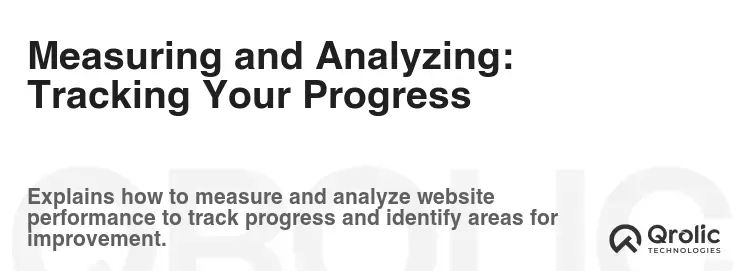
Google Analytics: Understanding Your Website Traffic
Google Analytics is a powerful tool for tracking your website traffic and understanding how users are interacting with your website.
- Track Key Metrics: Monitor metrics such as page views, bounce rate, time on site, and conversion rate.
- Identify Traffic Sources: Determine where your website traffic is coming from.
- Analyze User Behavior: Understand how users are navigating your website and which pages they are visiting.
- Set Goals and Track Conversions: Set goals to track conversions, such as form submissions or demo requests.
SEO Tools: Monitoring Your Search Engine Performance
SEO tools like Google Search Console, Ahrefs, SEMrush, and Moz allow you to monitor your website’s search engine performance and identify areas for improvement.
- Track Keyword Rankings: Monitor your website’s ranking for target keywords.
- Identify Technical Issues: Identify technical issues that may be affecting your website’s SEO.
- Analyze Backlink Profile: Analyze your website’s backlink profile and identify potential link-building opportunities.
A/B Testing: Optimizing Your Website for Conversions
A/B testing involves testing different versions of your website to see which performs best.
- Test Different Headlines, Images, and Calls to Action: Experiment with different elements to see which ones resonate most with your audience.
- Use A/B Testing Tools: Use tools like Google Optimize or Optimizely to run A/B tests.
- Analyze the Results and Implement the Winning Version: Analyze the results of your A/B tests and implement the winning version on your website.
Qrolic Technologies: Your Partner in AR Innovation
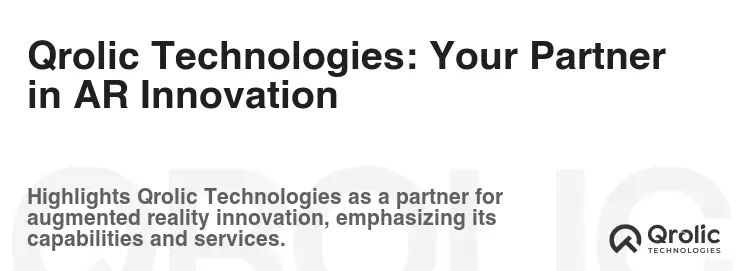
At Qrolic Technologies (https://qrolic.com/), we understand the power of augmented reality and its potential to transform businesses. We are a leading provider of custom AR solutions, helping companies across various industries leverage this cutting-edge technology to enhance their products, services, and customer experiences.
Our team of experienced AR developers, designers, and strategists can help you:
- Develop custom AR applications tailored to your specific needs.
- Integrate AR into your existing mobile apps and websites.
- Create immersive AR experiences for marketing and training purposes.
- Leverage AR SDKs to build innovative AR solutions.
We are passionate about helping our clients unlock the full potential of augmented reality. Contact us today to learn more about how we can help you create a captivating AR experience that drives engagement, increases brand awareness, and boosts your bottom line. If you are looking for a partner who understands the intricacies of AR company design and augmented reality website development, Qrolic Technologies is here to help.
Staying Ahead of the Curve: The Future of AR Websites
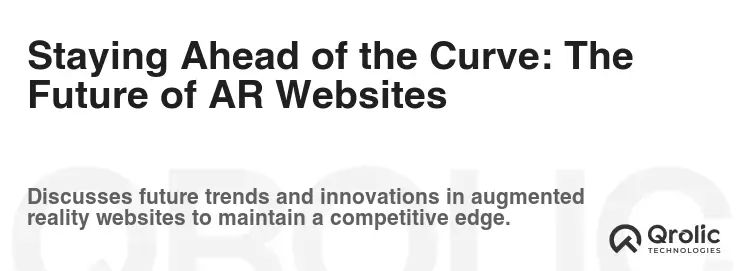
Emerging Trends in AR Web Design
The field of AR is constantly evolving, and your website needs to keep pace with the latest trends. Some emerging trends in AR web design include:
- WebAR: Integrating AR experiences directly into websites without the need for a dedicated app.
- Spatial Computing: Designing websites that are aware of the user’s physical environment.
- AI-Powered AR: Using artificial intelligence to enhance AR experiences.
- Personalized AR: Creating AR experiences that are tailored to individual users.
Continuous Improvement: Iterating and Evolving Your Website
Your website should not be a static entity. It should be continuously improved and evolved based on user feedback, analytics data, and emerging trends.
- Regularly Update Your Content: Keep your content fresh and relevant.
- Monitor Your Website Performance: Track key metrics and identify areas for improvement.
- Gather User Feedback: Ask users for feedback on your website.
- Stay Up-to-Date with the Latest Trends: Keep abreast of the latest developments in AR and web design.
By embracing continuous improvement, you can ensure that your AR firm website remains a valuable asset for your business for years to come. This complete guide helps you create a website that not only showcases your expertise in augmented reality website design but also effectively communicates the value of your AR company design capabilities.

